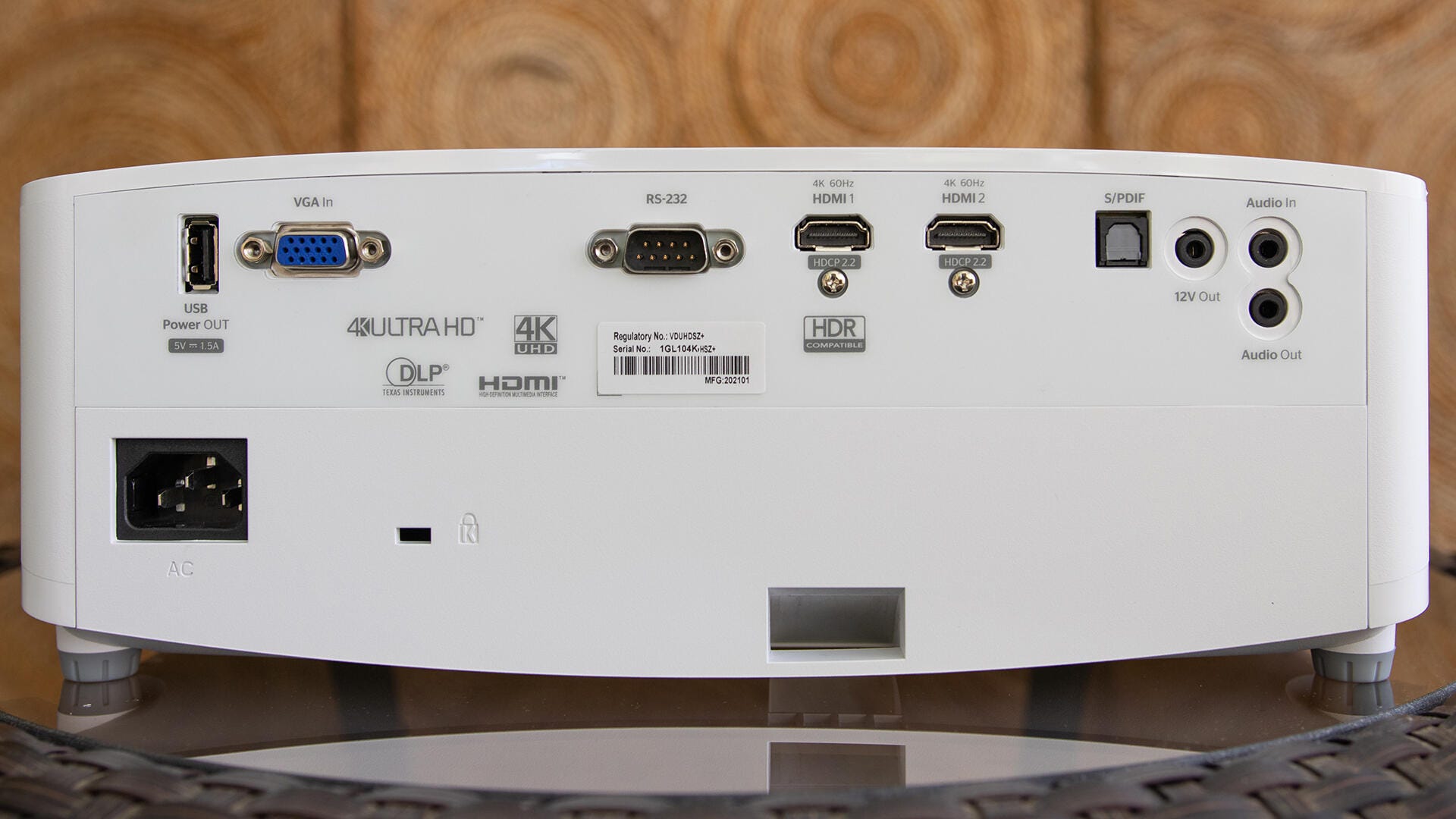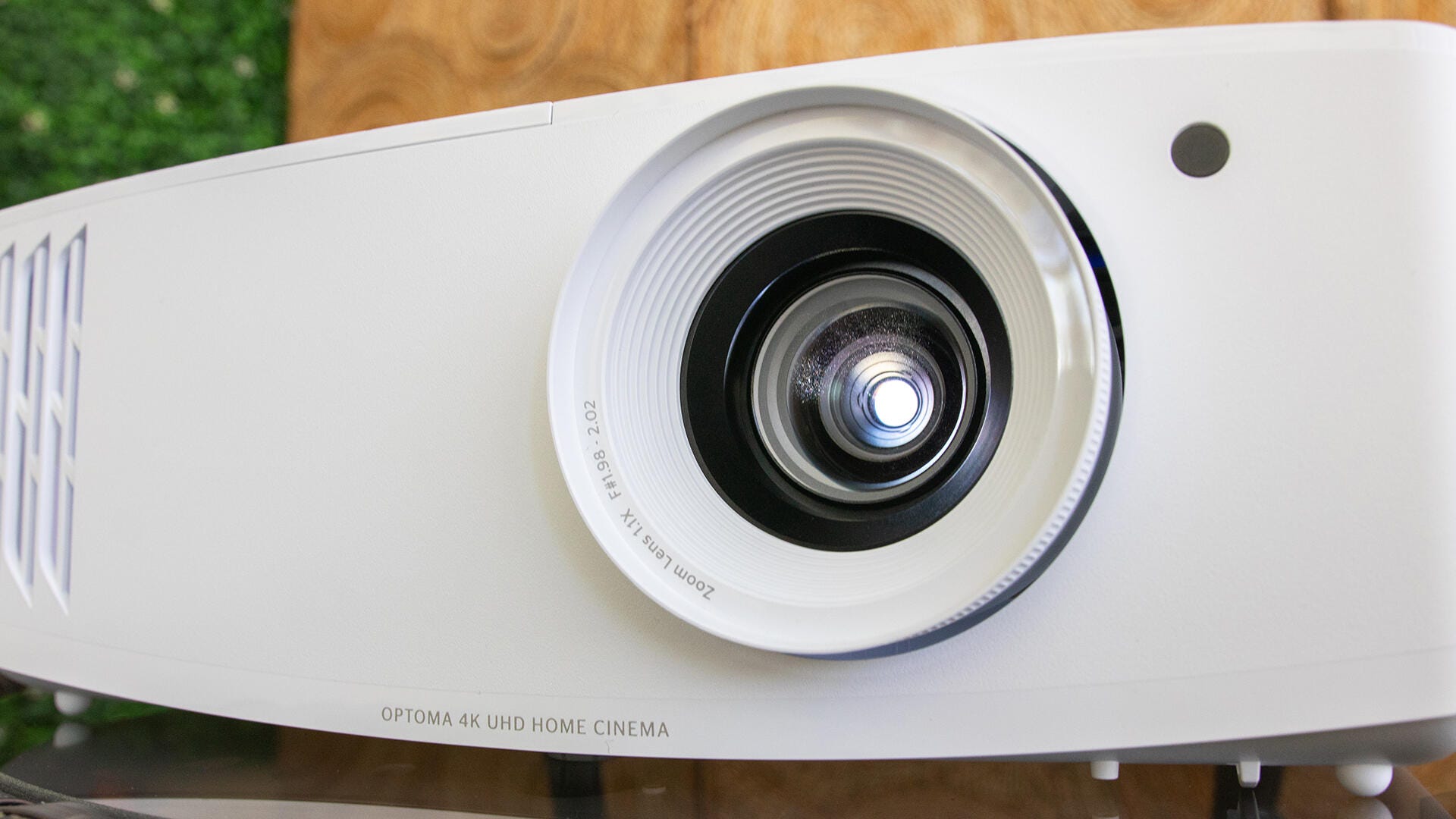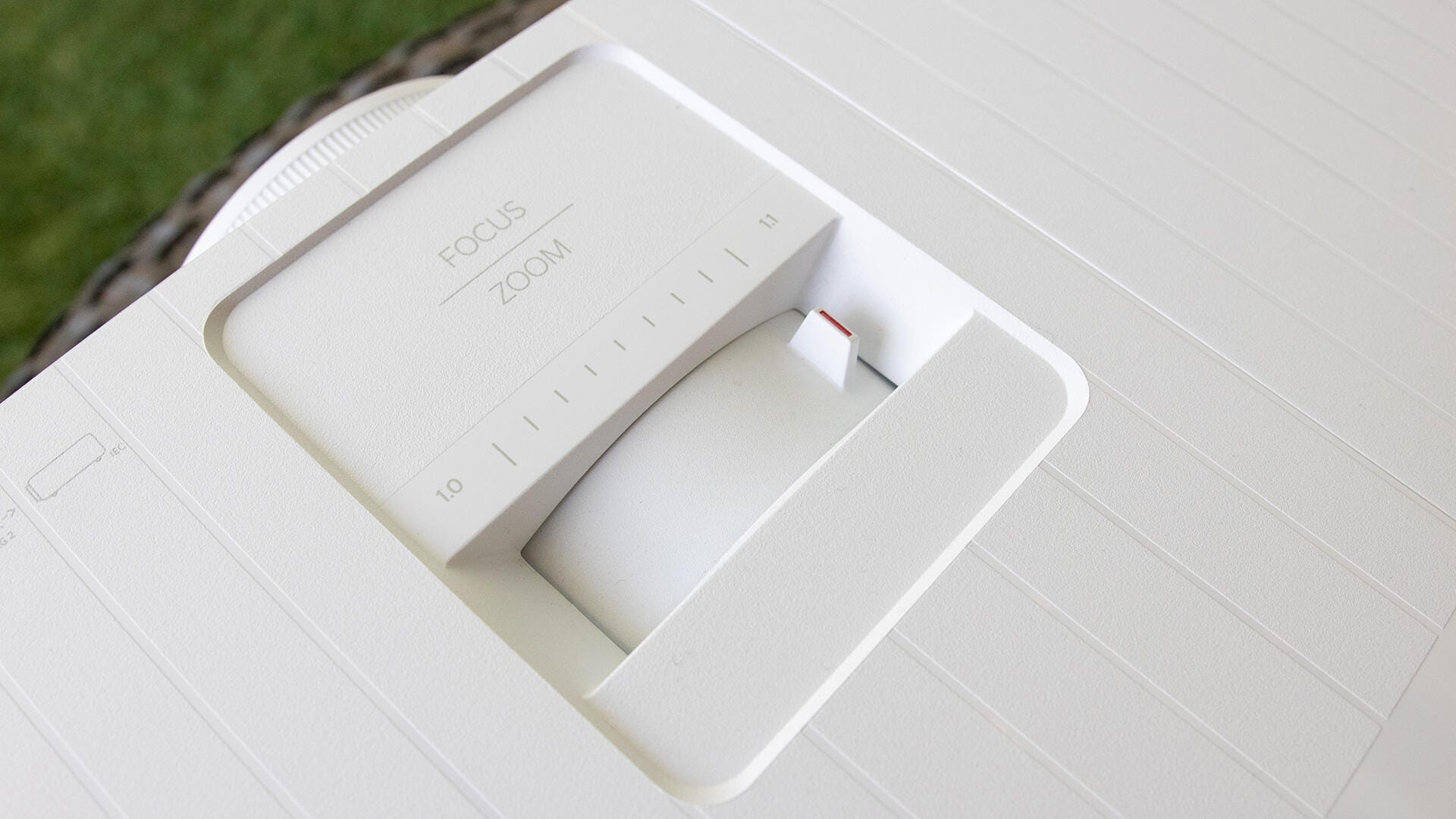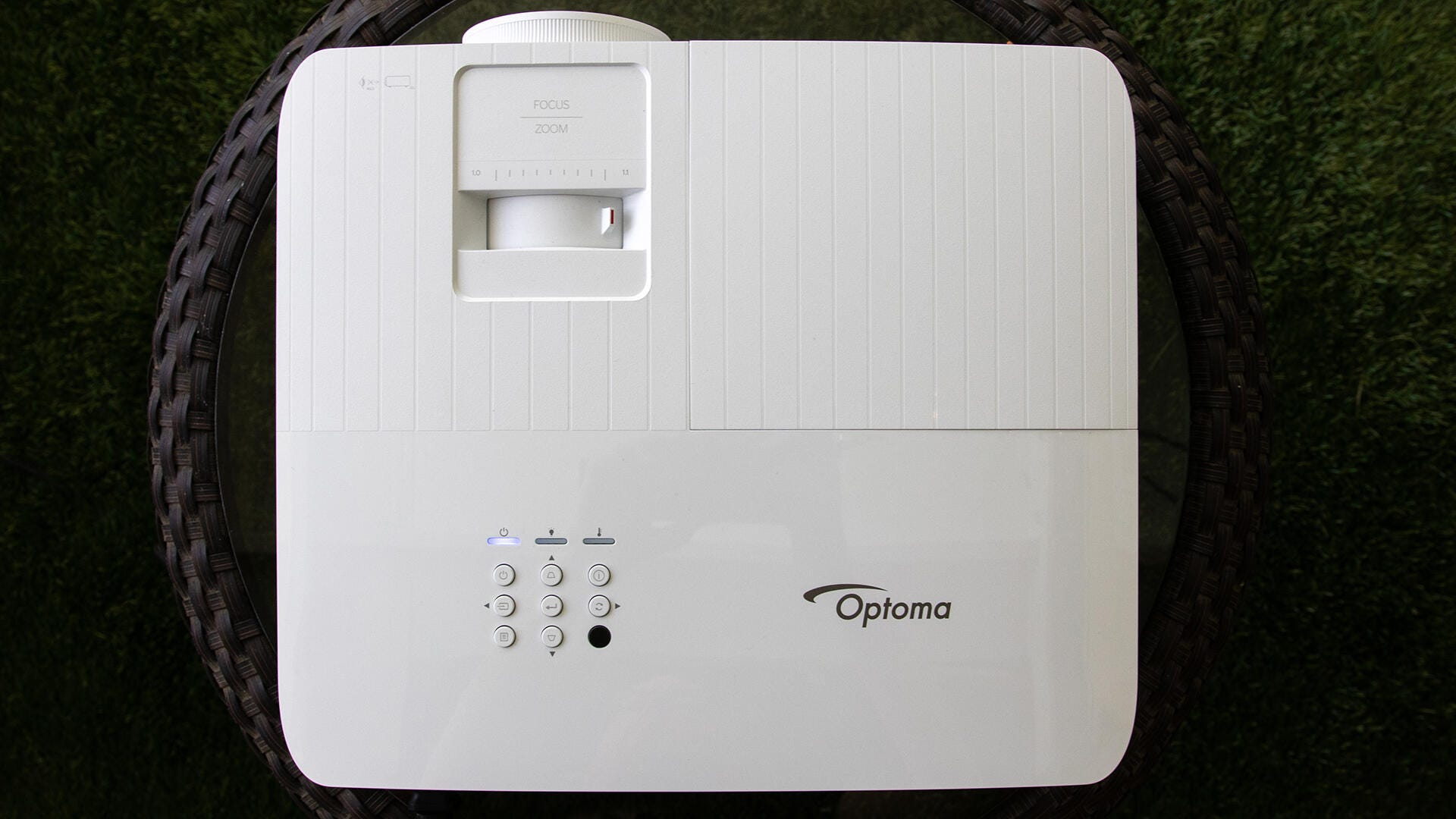The UHD35 is a 4K projector that costs only a few hundred dollars more than many 1080p projectors. It's bright, has fairly accurate colors and looks far better than you might expect of a "budget 4K projector." And it serves up eye-watering detail on a gigantic screen, the kind of sharpness that no 1080p projector can match.
How it stacks up
Like
- Bright with excellent sharpness
- Accurate color
- Costs only slightly more than 1080p competitors
Don't Like
- Mediocre contrast ratio
- Limited zoom and no lens shift
While overall the image on the UHD35 looks good, it still has the same issues common among projectors similar in price. There's no lens shift, the zoom is minimal and the contrast ratio -- an aspect of image quality even more important than detail and resolution -- is fairly average. It's also noisy, which is true of all small projectors, but the sound from the UHD35 is more wheeze than whirr. And then there's the HDR picture quality, which is improved over the earlier UHD30 but still not great.
Overall though, the UHD35 looks really good: Bright, vibrant colors, 4K detail, all in a projector that only costs a few hundred more than some great 1080p projectors like the Epson HC2250 or BenQ HT2250A. If you're looking to step up in sharpness without going too far into debt, it deserves strong consideration.
4K4U
- Native resolution: 3,840x2,160 pixels
- HDR-compatible: Yes
- 4K-compatible: Yes
- 3D-compatible: Yes
- Lumens spec: 3,600
- Zoom: Manual (1.1x)
- Lens shift: None
- Lamp life (Eco mode): 10,000 hours
The UHD35 is a 4K projector and, as you'd expect, can accept a 4K signal up to 60Hz. Interestingly, it can also accept 1080p up to 240Hz, if you've got a gaming rig capable of such a framerate.
One spec improvement of the UHD35 over its predecessor is its claimed light output, now at 3,600 lumens. The UHD30 was no slouch either, at 3,400. I measured close to the same on both, technically slightly less with the UHD35, but the difference was well within the range of measurement error and unit-to-unit variation. The point is, they're bright.
There's no lens shift, not a big surprise for a DLP-based projector in this price range. The zoom range is also rather meager, at 1.1x. So the range of distance from the screen is limited, placement-wise.

2x2.0 and more
- HDMI inputs: 2 (HDMI 2.0)
- PC input: Analog RGB
- USB port: 1 (1.5A power)
- Audio input and output: 1 in, 1 out (3.5mm)
- Digital audio output: 1 (Optical)
- Internet: None
- 12v trigger: Yes
- RS-232 remote port: Yes
- Remote: Backlit
While many other projectors have been dropping inputs, the UHD35 keeps several that seem almost anachronistic in a home theater projector in 2021. There's still an analog RGB input, for instance.
For the home automation crowd, there are RS-232 and 12v triggers. For the complete opposite of that crowd, if you want to plug in a speaker directly to the UHD35, there are 3.5mm analog outputs and an optical digital output. There's also a USB connection that can power a streaming stick.
A noticeable change from UHD35's predecessor is a second HDMI 2.0 input.

Picture quality comparisons
The BenQ is our pick for best PJ for the money overall. It's only 1080p, but its color and contrast are so good -- and I've seen how far above its weight it can punch -- it seemed like a logical comparison. The UHD30, one of our favorites from 2020, is the direct predecessor to the UHD35. I connected the two Optomas via a Monoprice 1x4 distribution amplifier. The BenQ, being 1080p, got its own source. I viewed them all, side-by-side-by-side on a 12-foot-wide 1.0-gain screen.
One of the best things about DLP projectors is, in general, how sharp and detailed they are. They're the only current display technology with no semblance of motion blur, so even at 1080p the BenQ is very sharp, even with motion. However, the Optomas are so much sharper. Projectors and the huge images they produce are the best way to see 4K content. The sharpness does draw the eye, with fine details like hair, wrinkles, fabric textures and so on much more apparent and lifelike with the Optomas. Neither are quite as sharp as the much more expensive LG HU810P, but better lens optics is one of the things you get when you spend more money.
Color-wise, the Optomas and the BenQ are quite similar, which is to say good. Unlike many DLP projectors, these three have accurate colors. So everything from background skies and sea, skin tones and hair, all look realistic. I'd give a nod to the UHD35 with HDR content, but we'll get to that in a next.

Generally, the UHD35 looks better than the UHD30 with HDR. This isn't because it's brighter, or has a better dynamic range. In both cases they're nearly identical to the UHD30. It seems Optoma has improved its HDR remapping -- the process of converting the HDR source to best match the display's capabilities. This process is important with just about every display, but especially with projectors since they have neither the light output nor dynamic range to do HDR well. So HDR content needs to be remapped to be watchable.
The image on the UHD35 is, on average, brighter (even with the same settings). It also has far less banding, an artifact that looks like abrupt bands where there should be smooth transitions from bright to dark or one shade to another.
A good scene to show this off is the opening flying fight from Falcon and the Winter Soldier. The bright sky and clouds on the UHD30 show banding bad enough that even casual viewers would wonder if there was something wrong with the projector. The UHD35 doesn't have this issue, though on some content I still saw some banding. If you notice it and are bothered by it, you don't lose much just turning off HDR in your source.
Contrast has never been a DLP strong suit and the 4K chips seem worse than their 1080p predecessors. The two Optomas have basically the same contrast ratio, in the mid 600s, which is far less than the BenQ. It's still the crowning champ in that regard at over 2,000:1. As a result the BenQ's image has more depth and more punch to it. That said, the UHD35's 649:1 is on par with pretty much every other 4K projector I've reviewed in the last year and higher than some far more expensive projectors.
Which is to say, the BenQ holds its own against projectors that cost nearly twice as much and with 4x the resolution. That extra resolution though -- on a 100+ inch screen and with a contrast ratio that isn't bad, plus great color -- does make the UHD35 eminently watchable.

More of the same can be a good thing
Side by side, there isn't a massive difference between the UHD30 and the UHD35. That's not a bad thing. The UHD30 was one of our favorite projectors last year -- and one I kept going back to when I was between projector reviews. The new model is a little more colorful, which is certainly pleasing to the eye, and definitely decodes HDR better, even if there's little real performance benefit to the HDR itself. If you already have a UHD30, there's no reason to upgrade.
However, I think it's safe to assume the vast majority of you reading this don't have a UHD30 and are coming into this just looking for an inexpensive 4K projector. In that case, the UHD35 is great. It is bright, has fairly accurate colors and creates an overall highly watchable image. It's not as bright as some, nor does it have as high contrast ratio as others, but it does offer 4K resolution for $1,300 which is a great deal. If you want the extra detail of 4K, without sacrificing color, brightness, or your wallet, yet can still afford spending more than $1,000 on a projector, the UHD35 is a great choice.
Geek Box
| Test | Result | Score |
|---|---|---|
| Black luminance (0%) | 0.246 | Poor |
| Peak white luminance (100%) | 174 | Average |
| Derived lumens | 1567 | Good |
| Avg. grayscale error (10-100%) | 6.005 | Average |
| Dark gray error (20%) | 4.715 | Average |
| Bright gray error (70%) | 5.681 | Average |
| Avg. color error | 16.955 | Poor |
| Red error | 9.736 | Poor |
| Green error | 21.186 | Poor |
| Blue error | 11.857 | Poor |
| Cyan error | 27.595 | Poor |
| Magenta error | 14.445 | Poor |
| Yellow error | 16.911 | Poor |
| Avg. saturations error | 8.90 | Poor |
| Avg. color checker error | 8.4 | Poor |
| Input lag (Game mode) | 33.6 | Good |
Measurement Notes
For the most accurate picture I used the Cinema picture mode and the D65 color temperature mode. This resulted in an image that was a little too warm, as in slightly lacking blue, across the brightness range.
Light output was solid in every mode. In the Cinema mode I measured 174 nits on a 102-inch 1.0 gain screen, for a lumen equivalent of 1567, roughly the same as other 4K DLP projectors in its class. If you want to sacrifice color and color temperature accuracy, the Bright picture mode bumps that up to an impressive 308.8 nits, though the overall image is much worse.
Color is quite accurate, with red, green, blue, cyan and yellow all on or close to their Rec 709 targets. Magenta is slightly red.
Contrast ratio, as typical with 4K DLP projectors, wasn't great but roughly the same as its competitors. On average, I measured a native contrast ratio of 649:1. For reference, this is less than the 1080p Epson 2250 (1,026:1) and BenQ HT2050A (2,094:1, the best in class), but higher than the $3,000 4K LG HU810P (490:1). The Dynamic lamp mode tracks the incoming video signal and varies the lamp output accordingly. In this mode, the UHD35 has a dynamic contrast ratio of 2,034:1. The Eco+ mode does the same, but limits the maximum light output for better energy efficiency. In this mode the dynamic contrast ratio is 1,173:1.
"Review" - Google News
April 17, 2021 at 06:00PM
https://ift.tt/2Q1HXO9
Optoma UHD35 projector review: Fabulous 4K picture for the price - CNET
"Review" - Google News
https://ift.tt/2YqLwiz
https://ift.tt/3c9nRHD
Bagikan Berita Ini














Where can buy best Optoma Technology Projector in Uae, Powerful Laser Home Theater Projector in Uae, 4K DLP Home Theater Projector in Uae
ReplyDeletehttps://gccgamers.com/monitors-projectors/home-theater-projectors/optoma-technology-powerful-laser-4k-ultra-high-definition-dlp-home-theater-projector-black-uhz65.html